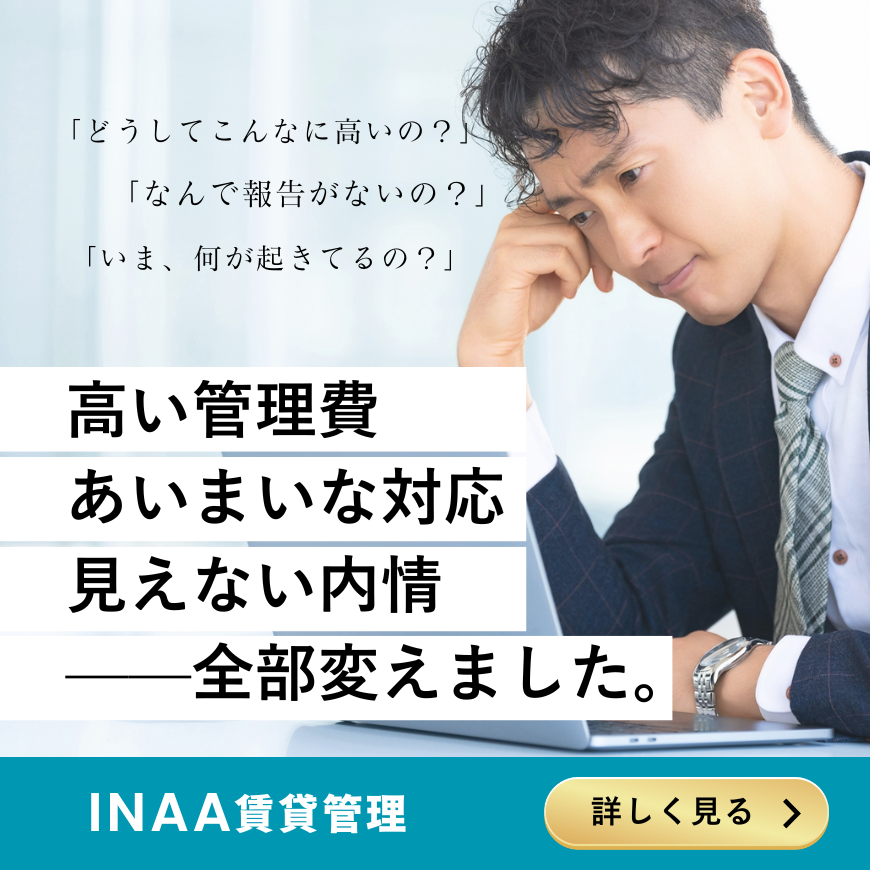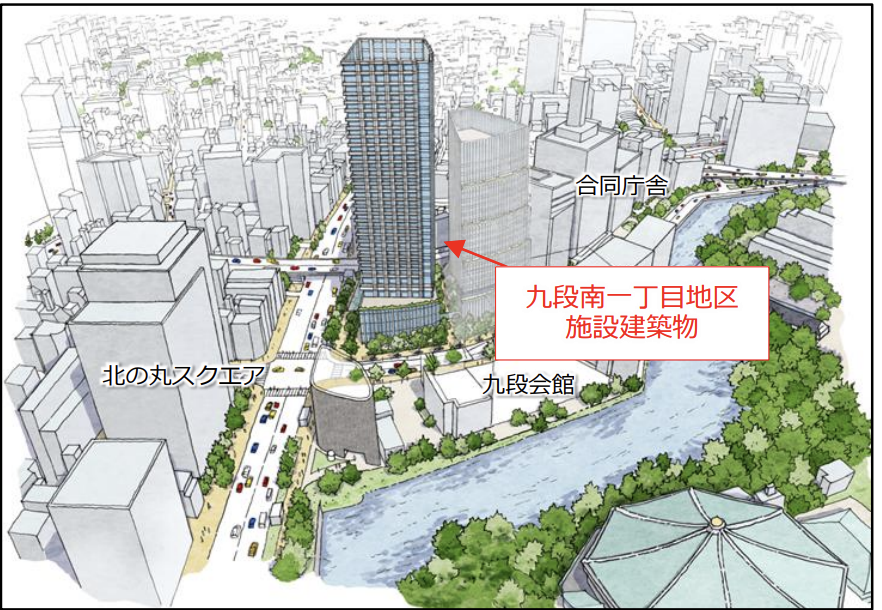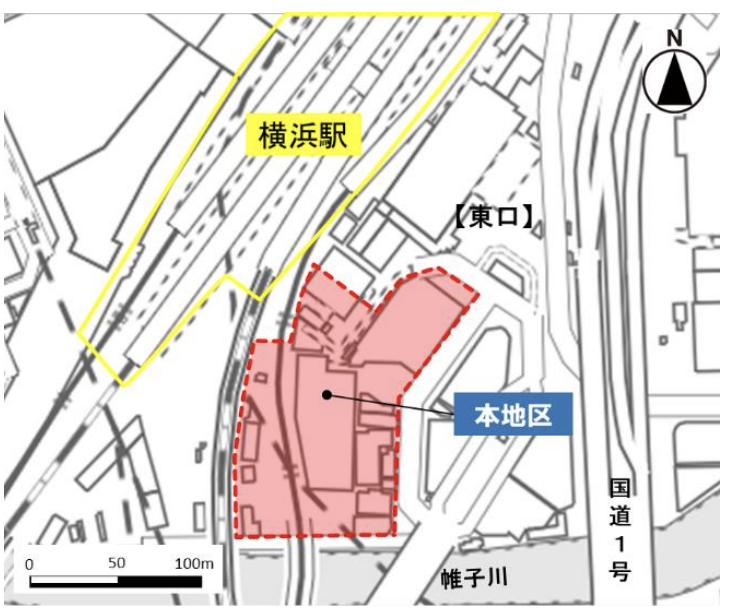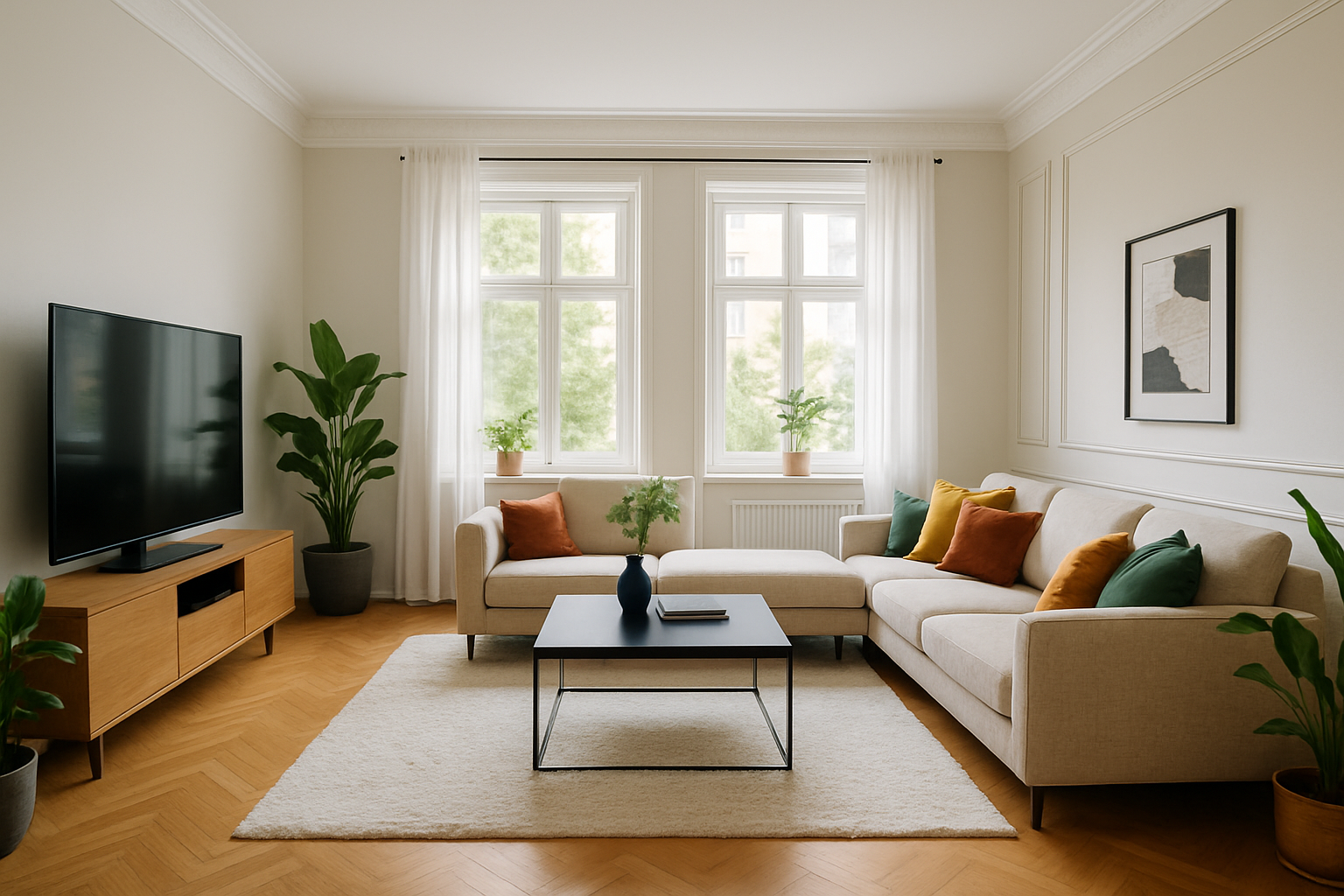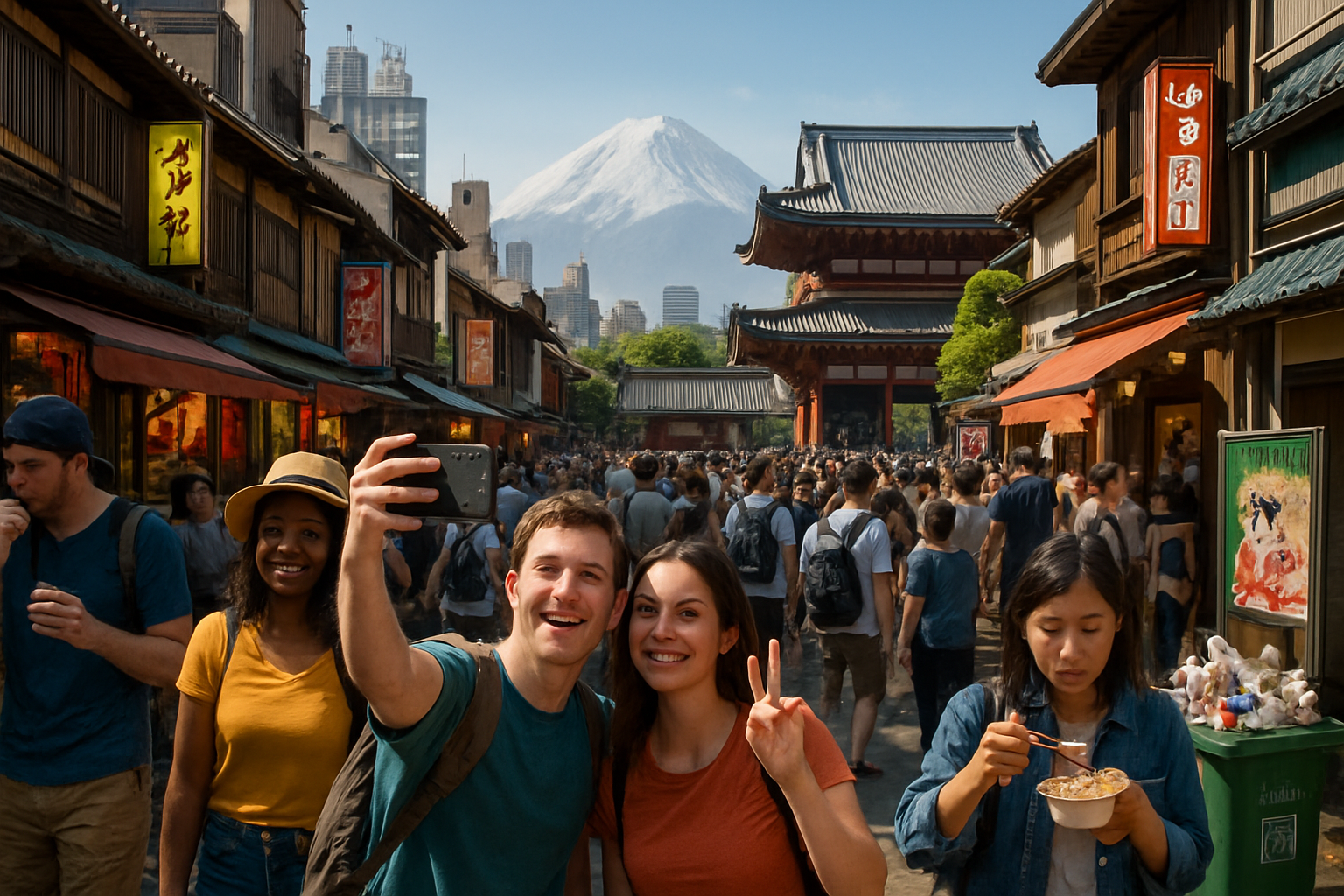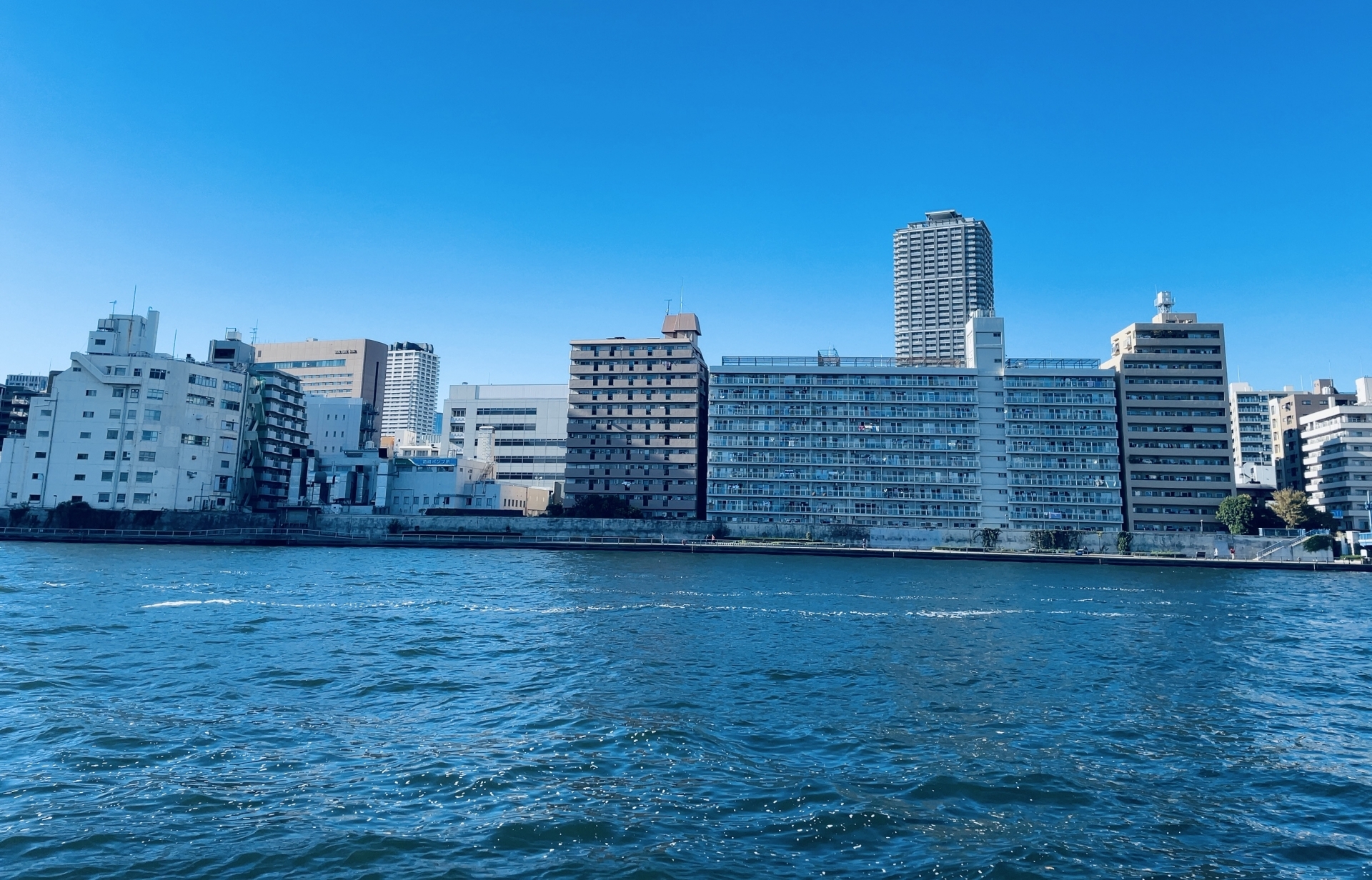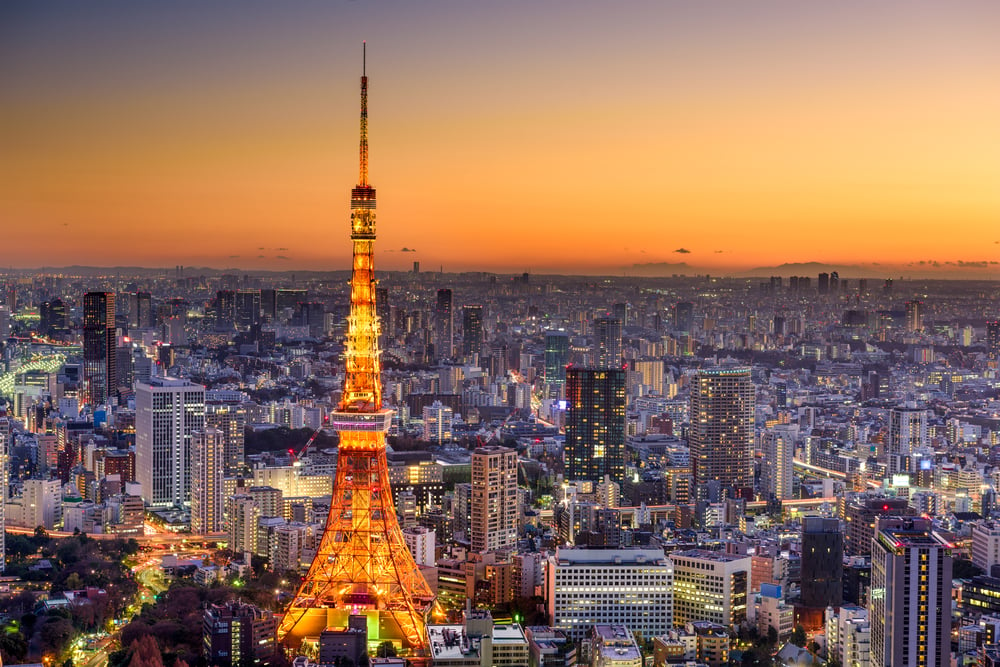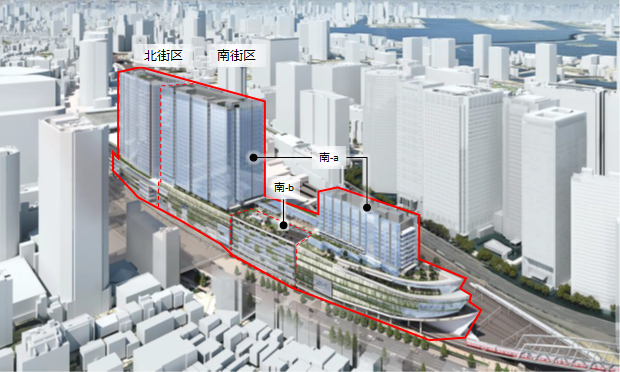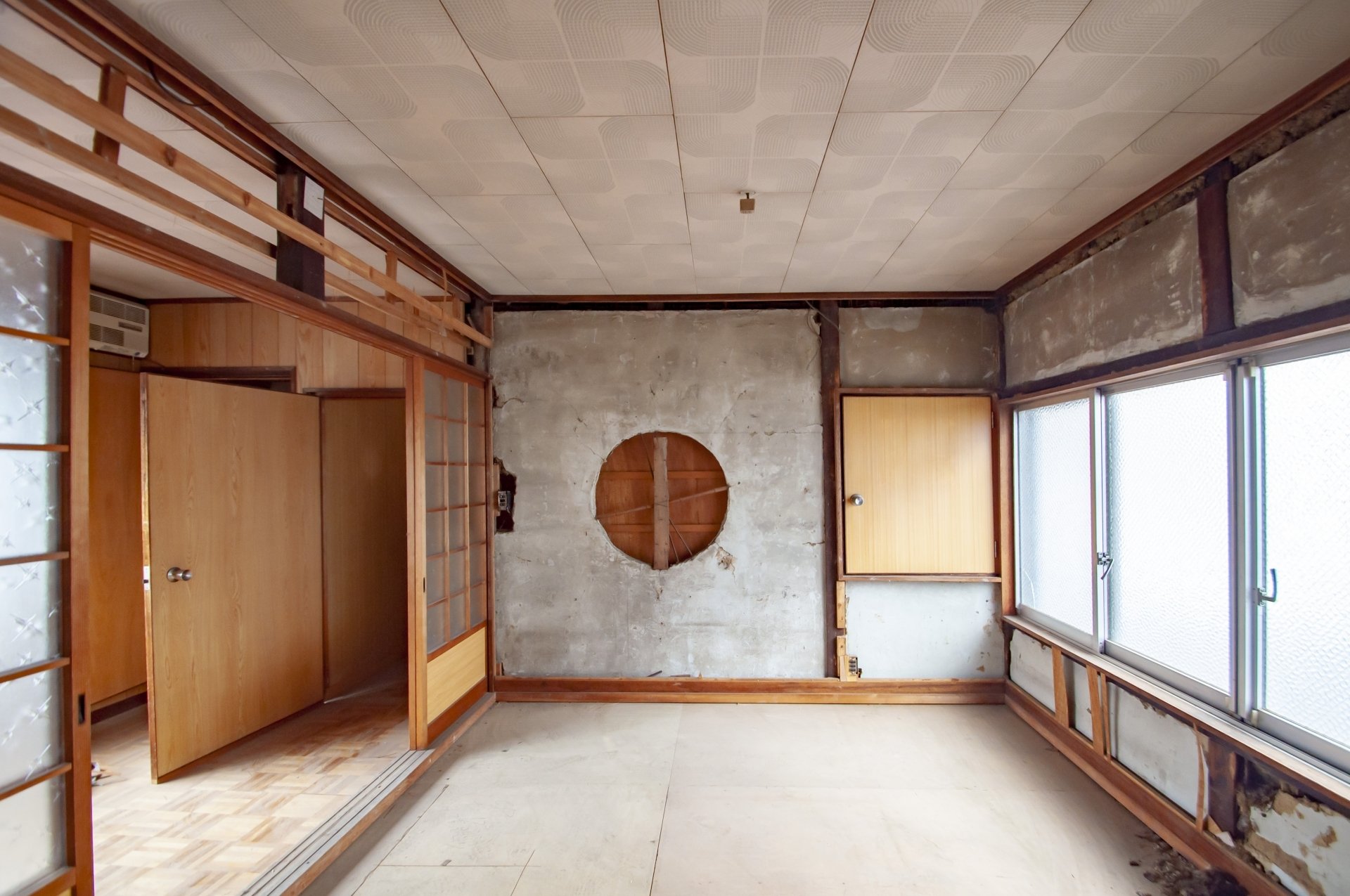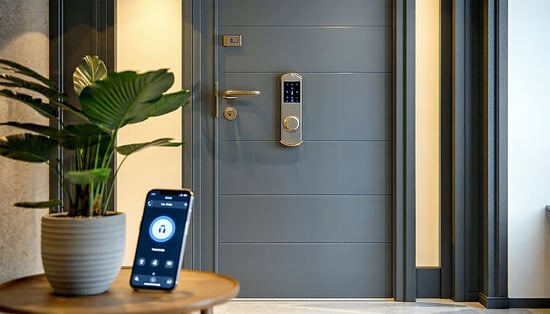Chiyoda-ku is an area in central Tokyo with a special presence. While it is the political and economic center of Japan with the Imperial Palace, the Diet Building, and government offices, it is actually attracting attention as an extremely attractive place to live.
In recent years, the population of Chiyoda-ku has been steadily increasing, with the 2020 census showing a population of 66,680, an increase of approximately 14% from 2015. These figures show that Chiyoda-ku is not just a business district, but a comfortable place to live where people actually want to live.
From a real estate investment perspective, Chiyoda-ku is also an extremely attractive area: the official land price for 2024 recorded a 7.43% increase over the previous year, and rent prices remain high at 19.99 million yen, the second highest in Tokyo. Due to its rare location and stable demand, the preservation of asset value in real estate investment is outstanding compared to other areas.
In this article, based on our many years of experience in the real estate industry as INA & Associates, Inc. we will provide a comprehensive overview of Chiyoda-ku, from its livability and attractiveness to its major spots and the advantages of real estate investment. We hope to provide practical information for those who are considering living or investing in Chiyoda-ku.
Basic Information and Attractiveness of Chiyoda-ku as a Place to Live
Basic Data on Chiyoda-ku
Chiyoda-ku is located in the center of Tokyo's 23 wards and serves as the political, economic, and cultural center of Japan. As the name of the area derives from Chiyoda Castle, another name for Edo Castle, it is a special area that combines modern urban functions while respecting history and tradition.
| Item | Data |
|---|---|
| Area | 11.66 square kilometers |
| Population (2020 census) | 66,680 persons |
| Number of households | 37,011 households |
| Population density | Approximately 5,720 persons per square kilometer |
| Adjacent Wards | Chuo, Shinjuku, Bunkyo, Taito, and Minato wards |
The most distinctive feature of Chiyoda-ku is that the Imperial Palace is located in the center of the ward. The area of the Imperial Palace is approximately 1.42 square kilometers, which accounts for about 12% of the total area of the ward. Due to this special geographical condition, Chiyoda-ku has a unique urban structure different from other wards.
In terms of demographics, Chiyoda Ward has the smallest population of the 23 wards of Tokyo, yet has recorded continuous population growth. The population bottomed out at 34,780 in 1995 and began to increase, reaching 66,680 in 2020, an increase of approximately 92%. This trend is expected to continue, with the National Institute of Population and Social Security Research estimating that the population will reach approximately 75,000 in 2030 and 80,000 in 2040.
Noteworthy is the high day/night population ratio. The daytime population of Chiyoda-ku has reached approximately 1,169,000, and its ratio to the nighttime population is 1,753.75%, the highest in Japan. This indicates that Chiyoda-ku functions as the center of Japan's economy, as well as its high level of safety and convenience as a living environment.
Excellent Transportation Access
Chiyoda Ward's transportation access is outstanding, even within Tokyo. The ward boasts a favorable transportation environment with 25 stations and a total of 20 train lines available.
| Station name | Number of lines available | Main Lines |
|---|---|---|
| Tokyo Station | 7 lines | Shinkansen, Yamanote Line, Keihin Tohoku Line, Yokosuka Line, Keiyo Line, Chuo Line, Marunouchi Line |
| Otemachi Station | 4 lines | Hanzomon Line, Marunouchi Line, Chiyoda Line, Tozai Line |
| Kanda Station | 4 lines | Yamanote Line, Keihin Tohoku Line, Chuo Line, Ginza Line |
| Akihabara station | 4 lines | Yamanote Line, Keihin Tohoku Line, Sobu Line, Hibiya Line |
| Ichigaya station | 4 lines | Sobu Line, Namboku Line, Yurakucho Line, Toei Shinjuku Line |
Looking at the number of trains during the morning rush hour (7-8am), 396 trains arrive at Tokyo Station, 358 at Otemachi Station, and 352 at Kanda Station. This means that there are four stations with more than 300 trains available in a two-hour period, providing an extremely high level of convenience for commuting to work and school.
All lines of the Tokyo Metro, with the exception of the Fukutoshin Line, run through Chiyoda Ward, and the Shinjuku Line and Mita Line of the Toei Subway are also available. This extensive subway network provides very smooth access to all parts of Tokyo.
Looking at the time required to reach major stations, it takes about 5 minutes from Tokyo Station to Ueno Station, about 15 minutes to Shinjuku Station, about 20 minutes to Shibuya and Ikebukuro Stations, and less than 30 minutes to Yokohama Station. Direct access to Narita and Haneda airports is also excellent, making the location convenient for domestic and international business trips and travel.
In terms of road transportation, the area is well served by three Metropolitan Expressway lines (the Tokyo Metropolitan Loop Line, Ikebukuro Line, and Yaesu Line), National Routes 1 and 246, and other trunk roads, making it easily accessible by car. However, public transportation is recommended due to the traffic congestion and lack of parking spaces characteristic of urban centers.
Public Safety and Security
Regarding public safety in Chiyoda Ward, it is necessary to distinguish between statistical figures and the actual living environment. According to the 2023 crime statistics, the crime rate in Chiyoda-ku was 3.45%, the highest among the 23 wards, largely due to the large daytime population.
| Type of Crime | Number (2023) | Percentage |
|---|---|---|
| Violent crimes | 16 cases | 0.7% Violent offenses |
| Violent offenses | 298 cases | 12.5% Intruder theft |
| Intruder theft | 37 cases | 1.6% Non-intrusive theft |
| Non-intrusive thefts | 1,310 cases | 55.1 |
| Other | 715 cases | 30.1 |
| Total | 2,376 cases | 100%. |
It is important to note that the majority of crimes are non-intrusive thefts (e.g., shoplifting), with very few intrusive thefts (37) directly affecting residents' lives. In addition, most of the crimes are concentrated in the downtown areas around Tokyo Station and Akihabara Station, while the residential areas are safe.
Chiyoda Ward also focuses on crime prevention measures. The ward takes multifaceted safety measures such as regular patrols by patrol cars equipped with blue revolving lights, a subsidy system to cover the cost of installing security cameras, "Kodomo 110-ban no Ie" activities, and after-school children's classes.
Security is tight around the Imperial Palace, the Diet Building, and government office areas, and security is provided 24 hours a day. This indirectly improves security in the surrounding residential areas, making it relatively safe for women to walk alone or go out at night.
In fact, many positive comments from residents living in Chiyoda Ward have been heard, such as "I feel safe at night because there are many pedestrians on the street," "It is reassuring that there are many police patrols," and "There are many streetlights and bright lights. We would like people to understand that the actual living environment is very safe without being misled by statistical figures.
Child-rearing and educational environment
Chiyoda Ward offers excellent support for child rearing and has a very good educational environment. Under the ward's basic philosophy of "supporting the healthy upbringing of children throughout the city and developing each individual's potential to the fullest," a comprehensive support system has been established.
The level of educational institutions is also worthy of special mention. Chiyoda Ward is known as the birthplace of some of Japan's most prestigious schools, including the University of Tokyo and Meiji University. The Ochanomizu area is home to universities such as Meiji University and Nihon University, and has an academic atmosphere as one of Japan's leading student districts. The Jimbocho area is famous for its "used bookstore district" and is characterized by its intellectual atmosphere.
| Educational Level | Main Characteristics |
|---|---|
| Early childhood education | A full range of licensed nursery schools and certified childcare centers |
| Elementary schools | 8 municipal elementary schools and many private elementary schools |
| Junior high schools | 2 municipal junior high schools, many private junior high schools |
| High School | A wide selection of metropolitan and private high schools |
| Universities and vocational schools | Meiji University, Nihon University, and other prestigious schools |
A generous childcare support system is also in place. Chiyoda Child Raising Support" provides temporary childcare and transportation to and from nursery schools and kindergartens for children from 7 months old to 6th grade elementary school. In addition, services such as "Child Short Stay" and "Childcare Support Visit" are provided to meet a variety of needs.
In terms of medical care, the "Children's Medical Expense Subsidy System" provides subsidies for medical expenses up to high school age. While many other municipalities provide subsidies only up to junior high school students, Chiyoda Ward demonstrates the generosity of its support for child rearing.
There are 507 medical facilities in the ward, including a full range of pediatric and obstetrics/gynecology facilities. In addition to general hospitals such as Tokyo Telecommunications Hospital, Kudanzaka Hospital, and Nihon University Hospital, there are also a number of specialized clinics, providing a safe environment for children's health care.
Major Spots and Attractive Areas in Chiyoda Ward
Historical and Cultural Spots
Chiyoda Ward is home to many important spots that symbolize the history and culture of Japan. These spots provide a familiar cultural environment for residents and enhance the value of Chiyoda-ku as a recommended area.
The Imperial Palace is located in the center of Chiyoda Ward and is a symbol of the ward. The East Gardens of the Imperial Palace are open to the public, allowing residents to enjoy nature in all four seasons. Especially during the cherry blossom season in spring and the autumn foliage season in fall, many visitors come to enjoy the abundant nature even though they are in the heart of the city. The area around the Imperial Palace is also popular as a jogging course, providing a valuable exercise space for residents who lead a healthy lifestyle.
Yasukuni Shrine is a historic shrine founded in 1869, and is known as a cherry blossom viewing spot with approximately 500 cherry trees in full bloom in spring. There is a museum on the grounds of the shrine, where visitors can learn about Japan's modern history.
The Tokyo Grand Shrine is popularly known as "Tokyo's Ise-sama" and is famous for its blessings for marriage. While the shrine attracts many worshippers, it also serves as a place of daily prayer for local residents.
As for cultural facilities, the National Museum of Modern Art plays an important role as a source of contemporary art. Through its special exhibitions and permanent collection, visitors can experience the latest artistic trends. The Science Museum is a center for science education, where both children and adults can enjoy and learn.
Commercial and Entertainment Areas
Chiyoda Ward's commercial areas each have their own unique character and cater to a variety of lifestyles.
Akihabara is known as a world-famous electric town and a mecca for otaku culture. Lined with stores specializing in electronics, anime, and game-related products, the area attracts many tourists from Japan and abroad. In recent years, redevelopment has progressed and office buildings and commercial facilities have increased, strengthening Marunouchi's function as a business district.
Marunouchi is not only one of Japan's leading business districts, but has also developed into an upscale shopping area. Famous domestic and international brands have opened stores along Marunouchi Naka-dori Avenue, providing a sophisticated shopping environment. In addition, numerous restaurants and cafes offer a gourmet dining experience.
Otemachi is the center of the Japanese economy with a concentration of financial institutions and the headquarters of major corporations. In recent years, large-scale redevelopment has been underway, with the construction of state-of-the-art office buildings and commercial facilities. There is also a well-developed underground shopping mall, making it possible to move around and shop comfortably even on rainy days.
Yurakucho has a long history as a commercial and entertainment center. Large-scale facilities such as the Yurakucho Marion and the Tokyo International Forum offer a wide range of shopping and entertainment options.
Kanda Jimbocho is famous as Japan's largest used bookstore district, with approximately 180 used bookstores. It is a treasure trove for book lovers, offering a wide range of books from academic books to literature and manga.
Nature and Parks
Despite being in the heart of the city, Chiyoda Ward maintains a rich natural environment. These green spaces serve as places for residents to rest and relax, as well as important elements that enhance the quality of the urban environment.
Hibiya Park was Japan's first Western-style park, opened in 1903, and is well known as an oasis in the heart of the city. The park features a large fountain, an outdoor music hall, and the Hibiya Public Hall, where various events are held throughout the four seasons. Since the park is adjacent to the office district, many business people take a break during lunch time.
Chidorigafuchi Greenway is located on the northwest side of the Imperial Palace and is famous nationwide as a cherry blossom viewing spot. About 260 Someiyoshino cherry trees are planted along the 700-meter promenade, forming a tunnel of cherry blossoms in spring. At night, the cherry blossoms are lit up, creating a fantastic nighttime cherry blossom viewing experience.
The Hotel New Otani Japanese Garden is a rare spot where visitors can enjoy an authentic Japanese garden in the heart of the city. The garden, which is approximately 10,000 square meters in area, has a pond garden with a circular path around it, allowing visitors to enjoy the beauty of the changing seasons.
These natural surroundings greatly enhance the quality of the living environment in Chiyoda Ward. Being able to live in a lush green environment despite being in the heart of the city is one of the major attractions of Chiyoda Ward. The abundance of opportunities to experience nature in daily life, such as morning jogs, lunchtime walks, and weekend family outings, is an important factor in improving the quality of life for residents.
Advantages of Investing in Real Estate in Chiyoda-ku
Current State of the Real Estate Market
The real estate investment market in Chiyoda-ku is positioned as a particularly high-profile area in Tokyo, and a detailed analysis of market data for the year 2024 clearly reveals its attractiveness and potential as an investment target.
| Indicators | 2024 data | Year-on-year change |
|---|---|---|
| Average land price | 6,163,200 yen/㎡ | +7.43 |
| Residential land average | 2,968,571 yen/m2 | +7.4 |
| Commercial land average | 6,585,132 yen/m2 | +7.4 |
| Average rent | 199,900,000 yen | +11.67 |
| Used condominium prices | Over 10 years old +144.1% (compared to new) | Compared to new construction |
According to the official land price survey for 2024, the average land price in Chiyoda-ku was 6,163,200 yen/m2 (approx. 20,370,000 yen/tsubo), a 7.43% increase over the previous year. This rate of increase is one of the highest among Tokyo's 23 wards, and is testament to the strength of demand for real estate in Chiyoda-ku.
Particularly noteworthy is the steady increase in prices for both residential and commercial land. The average price of residential land is 2,968,571 yen per square meter and that of commercial land is 6,585,132 yen per square meter, indicating that real estate values are improving regardless of use.
With regard to rent prices, Chiyoda Ward maintains the second-highest level in Tokyo at 199,900,000 yen. In particular, the rent increase rate for studio properties is the highest in Tokyo at 11.67%, indicating strong rental demand.
In the existing condominium market, prices of properties that are more than 10 years old have increased by an average of 144.1% compared to when they were newly built for sale. This indicates that real estate in Chiyoda-ku is continuously increasing in value not only as a residence but also as an asset.
In terms of yields, the market price for a condominium unit in Chiyoda-ku is around 6.57%, and that for a single building is around 4-5%. Compared to other areas, yields are lower, but this reflects the high and stable property prices.
Investment Advantages
Investing in real estate in Chiyoda-ku offers unique advantages not available in other areas. Understanding these advantages will help you develop a long-term asset-building strategy.
Stability of asset value is the greatest advantage of investing in Chiyoda-ku. Because of the concentration of Japan's central functions-the Imperial Palace, the Diet Building, and government offices-the risk of significant fluctuations in the value of the area itself is extremely low. In addition, since the supply of land is physically limited, value can be expected to be underpinned by scarcity.
Another important point is the firmness of rental demand. The population of Chiyoda-ku is continuously increasing and is projected to reach approximately 80,000 by 2040. The overwhelming daytime population of approximately 1,169,000 indicates the great demand for work and residence. In particular, rental demand from foreign-affiliated companies, the executive class of major corporations, and high-income earners is stable, and vacancy risk is relatively low.
The superiority of transportation convenience is a source of long-term competitiveness: the extensive transportation network with 25 stations and 20 train lines is at a level that is difficult to achieve in other areas. Chiyoda Ward's centrality is likely to be maintained and enhanced even with future urban development and transportation infrastructure improvements, and its superiority in terms of accessibility is expected to continue.
Brand power is another factor that should not be overlooked. The address "Chiyoda-ku" is recognized as a symbol of social status, and is highly appealing in the rental market. Especially for expatriates and corporate executives, a Chiyoda-ku address is important.
In terms of future potential, several large-scale redevelopment projects are underway. New developments are planned in the Uchisaiwaicho, Otemachi, and Marunouchi districts, which are expected to increase the value of the entire area. These developments are expected to enhance commercial and cultural facilities, improve transportation infrastructure, and lead to qualitative improvements in the living environment.
Cautions for Investors
On the other hand, there are several points to note when investing in real estate in Chiyoda Ward. It is important to fully understand these before making an investment decision.
High property prices are the biggest hurdle. Real estate prices in Chiyoda-ku are among the highest in Tokyo, and the initial investment amount is very large. In many cases, funds ranging from tens to more than 100 million yen are required for condominiums, and from several hundred million yen to several billion yen for a single building, making it highly difficult to procure funds.
Low yields are another factor to consider. Yields in Chiyoda Ward are around 4-6%, which is low compared to other areas. This reflects the high property prices, but may not be attractive to investors who value short-term cash flow.
Increased competition is another important issue. There is strong interest in prime properties in Chiyoda Ward from both domestic and foreign investors, making it difficult to secure properties. In many cases, properties in particularly good locations and properties that are relatively new are sold before they come on the market, so the ability to gather information and make quick decisions is required.
The high cost of maintenance cannot be overlooked. High management fees, reserve funds for repairs, and property taxes unique to central Tokyo tend to increase the cost of ownership. Repair costs may also become more expensive as the property ages, requiring careful long-term income and expenditure planning.
Market fluctuation risk must also be taken into account. Although real estate prices in Chiyoda Ward are relatively stable, they may be affected by changes in economic conditions, interest rate trends, and tax system revisions. In particular, foreign investor trends and exchange rate fluctuations can have a significant impact on the market.
Successful investment strategies include an emphasis on asset value stability based on the premise of long-term ownership, an emphasis on proximity to train stations and convenience in area selection, selection of newer and better-managed properties in property selection, and financial planning based on low yields. In addition, the key to success is to select and manage properties appropriately in cooperation with a real estate company that has professional knowledge and experience.
Conclusion
Chiyoda-ku, while being the political and economic center of Japan, is also a very attractive area to actually live. As explained in detail in this article, Chiyoda-ku has excellent features in terms of both livability and investment value.
In terms of livability, the area offers overwhelming transportation convenience with 25 stations and 20 train lines, an excellent medical and educational environment, abundant nature and historical and cultural spots, and, in fact, a good security environment. For the child-rearing generation in particular, the generous support system and high-quality educational environment are major attractions.
From a real estate investment perspective, the main advantages are continuous population growth, stable rental demand, preservation of asset value due to scarcity, and the brand power of Chiyoda Ward. However, high property prices and low interest rates are not the only reasons for this.
However, high property prices and low yields are also issues, so a long-term perspective and adequate financial planning are necessary when considering investment. An investment strategy that emphasizes stability of asset value and future potential rather than short-term profitability is appropriate.
If you are considering living or investing in Chiyoda-ku, we recommend that you consult with a real estate agent who fully understands the characteristics of the area and has professional knowledge and a wealth of experience. We are able to meet the diverse needs of our clients with our extensive experience and expertise in real estate in Chiyoda-ku and other central Tokyo areas.
Frequently Asked Questions
The crime rate in Chiyoda-ku is statistically 3.45%, which is one of the highest among the 23 wards, but this is due to the overwhelming daytime population of approximately 1,169,000 people. The actual living environment is very safe, with the majority of crimes being minor thefts in the downtown area. Security is tight 24 hours a day around the Imperial Palace and government offices, and residential areas are safe. Women walking alone and going out at night are also relatively safe.
The market rate of real estate investment yield in Chiyoda-ku is about 6.57% for a condominium unit and 4-5% for a single-building condominium. This is lower than in other areas, but this reflects the high property prices and stability of asset values. An investment strategy that emphasizes long-term preservation of asset value rather than short-term profitability is suitable.
The entire Chiyoda Ward is suitable for raising children, but the Kojimachi/Bancho area, Kudan/Fujimi area, and Kanda area are particularly recommended. These areas are calm residential areas and have good access to educational institutions and medical facilities. They are also close to the Imperial Palace, Hibiya Park, and other natural environments suitable for children's growth.
The average rent in Chiyoda-ku is 199,900 yen (2nd in Tokyo). The standard range is 150,000-250,000 yen for a studio to 1LDK, and 250,000-400,000 yen for 2LDK or more. Although rents vary greatly depending on the location, age of the building, and facilities, they are reasonable considering the convenience of the central Tokyo area. The rent increase rate is also high at 11.67% per year, indicating the strength of rental demand.
The main points to note are the large initial investment amount due to high property prices, low yields of around 4-6%, intensifying competition to secure prime properties, and high maintenance costs unique to the central Tokyo area. In addition, market fluctuation risk and the influence of foreign investor trends must also be taken into consideration. For success, it is important to have a strategy based on long-term ownership and to work with a partner who has specialized knowledge.

Daisuke Inazawa
Representative Director of INA&Associates Inc. Based in Osaka, Tokyo, and Kanagawa, he is engaged in real estate sales, leasing, and management. He provides services based on his extensive experience in the real estate industry. Based on the philosophy that “human resources are a company's most important asset,” he places great importance on human resource development. He continues to take on the challenge of creating sustainable corporate value.

.png)
